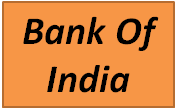 Bank Of India Marketing Executive Specialist Officers Question Paper.
Bank Of India Marketing Executive Specialist Officers Question Paper.
Bank Of India Marketing Executive Specialist Officers Question Paper Bank Of India Specialist Officers Question Paper Answer Previous Year Old Paper Last Year Bank Of India officers Question Papers, Previous year Bank Of India officers Question Papers solved, Where can i get Past Bank Of India officers question paper with solution answers Past Previous year Question Papers for Students download free, Old Bank Of India officers question papers with solution, December Placement Paper Free download pdf Previous year Papers for Students Past Bank Of India officers Question Bank Download free, Bank Of India Law Officers Papers, Bank Of India officers exam Past Question Papers solved, pdf Bank Of India officers entrance papers free download, 2020 Bank Of India officers paper Download,Marketing Executive (MBA) Bank Of India officers Question Paper Download Free, Free download pdf Bank Of India officers answer Key 2020, Bank Of India officers Question Paper with answers, Bank Of India officers Question Paper with Answer key free Download Free Bank Of India officers Sample question papers Bank Of India officers Model question papers Bank Of India officers admission Bank Of India officers Notification 2020 Entrance mock test papers Bank Of India officers How to crack | reference books latest books Bank Of India officers Coaching Center Institutes Bank Of India officers Syllabus vacancies latest books recruitment 2020.
Bank Of India Marketing Executive Specialist Officers Question Paper
1. The total number of Puranas are
(A) 18 (B) 20
(C) 12 (D) 16
2. The English East India Company’s first ‘Presidency’ in India was
(A) Madras (B) Masulipatnam
(C) Surat (D) Hughli
3. Ranjit Singh was the Chief of
(A) Nihang Misl (B) Ramgarhia Misl
(C) Sukerchakia Misl (D) Dalewalia Misl
4. “Give me blood and I promise you freedom” was uttered by
(A) Bhagat Singh (B) Chandra Shekhar Azad
(C) Sardar Patel (D) Subhash Chandra Bose
5. Natural Rubber production is dominated by
(A) U.S.A. (B) Western Europe
(C) South-East Asia (D) South America
6. The Leading producer of Coffee in the world is
(A) Turkey (B) Brazil
(C) Venezuela (D) Cuba
7. Where is the greatest variety of flowers found ?
(A) Kerala (B) Uttar Khand hills
(C) Assam (D) Sikkim
8. Which of the following is the biggest producer of Cashewnut ?
(A) Karnataka (B) Kerala
(C) Tamil Nadu (D) Kashmir
9. Gypsum is found in
(A) Rajasthan (B) Orissa
(C) Assam (D) Madhya Pradesh
10. The Bokaro Steel Plant has been set up with the assistance of
(A) Russia (B) U.K.
(C) U.S.A. (D) Germany
11. Statutory Liquid Ratio (SLR) is an instrument of
(A) Trade Policy (B) Budget
(C) Fiscal Policy (D) Monetary Policy
12. India’s first Private telephone service was launched in 1998 at
(A) New Delhi (B) Indore
(C) Mumbai (D) Kochi
13. Among polymeric materials we cannot include
(A) Natural Rubber (B) Nylon
(C) Guttaperchar (D) Asbestos
14. Which of the following is the smallest country in terms of area ?
(A) Maldives (B) Malta
(C) Marshal Islands (D) St. Kitts-Neves
15. “Socialist Pattern” comes through
(A) Free Economy (B) Mixed Economy
(C) Public Sector (D) Capitalist Economy
16. In calculating the country’s GNP as marked prices which one of the following is not included ?
(A) Subsidies (B) Depreciation Allowance
(C) Investment (D) Indirect Taxes
17. “Tertiary Sector” of the economy refers to :
(A) Primary Sector (B) Secondary Sector
(C) Service Sector (D) Manufacturing Sector
18. The Planning Commission was set up by the Government of India in
(A) 1944 (B) 1947
(C) 1950 (D) 1951
19. The First Five Year Plan was finalised in
(A) March, 1950 (B) December, 1950
(C) March, 1951 (D) December, 1952
20. The Five Year plans was abandoned in
(A) 1965 (B) 1966
(C) 1967 (D) 1970
21. Sunrise Industries include :
(A) Computers (B) Biotechnology
(C) Telecommunications (D) All the above
22. Core Industries were listed for the first time in the Industrial Licensing Policy of
(A) 1988 (B) 1976
(C) 1951 (D) 1970
23. IDBI is a
(A) Bank (B) Board
(C) Bureau (D) Corporation
24. Which of the following is not a basic Industry
(A) Iron & Steel (B) Fertilisers
(C) Paper (D) Cement
25. PSIDC means
(A) Punjab State Industrial Development Corporation
(B) Punjab Small Industrial Development Corporation
(C) Punjab Social & Income Development Corporation
(D) Punjab Subsidies Industrial Development Corporation
Q. 26 to 30; Direction : Answer the questions based on the agewise population distribution of a state
provided in the following table :
Age Group— Percentage
upto 110 years 100·00
upto 65 years 98·87
upto 55 years 93·75
upto 45 years 79·50
upto 35 years 65·00
upto 25 years 47·75
upto 15 years 30·00
26. Which one of age groups listed below accounts for the maximum population in the state ?
(A) 0—15 (B) 15—35
(C) 26—45 (D) 46—55
27. Out of every 4,00,000 people, the number of persons below 25 is approximately
(A) 1,81,000 (B) 1,91,000
(C) 1,94,000 (D) 1,99,000
28. If it is known that there are 40 million below 36 years of age, then how many million people
(approximately) are in the age group of 56—65 ?
(A) 4·2 million (B) 3·8 million
(C) 3·15 million (D) cannot be determined
29. If there are 20 million people in the age group of 56 and above, what is the difference (approx.)
between the total number of people in the age group of 16—25 and 46—55 ?
(A) 10·2 million (B) 11·2 million
(C) 12·2 million (D) Cannot be determined
30. If the difference between the number of people in the age group of 46—55 and 26—35 is 3·9 million,
then the approximate total population is
(A) 120 million (B) 130 million
(C) 390 million (D) None of these
Similar Pages….
See Also……
